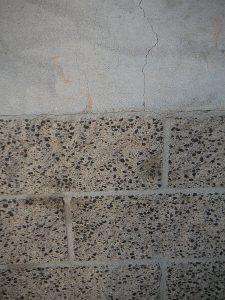So I’d heard about “self-healing” concrete using chemicals that react with water to seal cracks, I’ve even blogged about self-healing concrete using bacteria embedded into the concrete (back in 2011). And then yesterday I came across research talking about using fungi for this purpose. Regardless of which method ends up working, I think these are …
Microbes indoors Effects of Microbial Aerosol in Poultry House on Meat Ducks’ Immune Function – Guanliu Yu – Frontiers in Microbiology (OA) The aim of this study was to evaluate effects of microbial aerosols on immune function of ducks and shed light on the establishment of microbial aerosol concentration standards for poultry. A total of 1800 …
Microbes and humans Review: The Anthropocene: a conspicuous stratigraphical signal of anthropogenic changes in production and consumption across the biosphere – Mark Williams – Earth’s Future (OA) Biospheric relationships between production and consumption of biomass have been resilient to changes in the Earth system over billions of years. This relationship has increased in its complexity, …
Set in stone Commentary: Making microbiology of the built environment relevant to design – G. Z. Brown, Jeff Kline, Gwynne Mhuireach, Dale Northcutt and Jason Stenson – Microbiome (OA) Architects are enthusiastic about “bioinformed design” as occupant well-being is a primary measure of architectural success. However, architects are also under mounting pressure to create more sustainable …
A recent study form Ling et al explored microbial community succession on concrete. They examined the concrete in two sewage manholes over a year using 16S rRNA sequencing. Concrete is a huge part of urban environments, and corrosive microbes eat it away. This causes structural damage, which is especially unwanted in sewage systems. The abstract for the …
I’ve been thinking a lot about concrete lately. Mainly, I’ve been thinking about the lack of concrete here in Boulder compared to Houston, where I lived for four years until May this year. As I’m training for a half-marathon, my knees are particularly grateful for the lack of concrete they’ve experienced of late. We’ve also …
Back in May we posted about a Gizmodo article entitled “Concrete-Dissolving Bacteria Are Destroying Our Nation’s Sewers”. This article highlighted Sloan-funded work by Mark Hernandez and others that describes some of the biochemistry and microbiology behind concrete corrosion in sewers. A (fee-required) paper describing that work has just come out, with a press release focused …
Interesting article about a “living alternative to concrete”. Ignoring the fact that the final product is not actually living, this is a pretty cool idea. This product uses bacteria to produce a concrete-like substance using much less energy than traditional methods. A number of similar ideas are the in the works including mushroom-grown bricks. Some …
A quick post here describing a Gizmodo article highlighting some of the Sloan-funded MBE research presented at the recent AAAS Symposium on Microbiomes of the Built Environment. It talks about work by both Mark Hernandez and Amy Pruden on different aspect of plumbing microbiomes.
Not sure what to make of this still but it certainly is a case of microbes in the built environment: Living Concrete Fixes Its Own Cracks With Built-in Bacteria. Not sure why the Malaysian Digest is covering this but it still intrigues me and thought it might be of interest.
